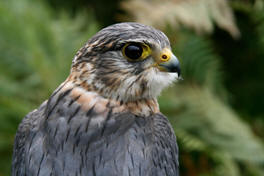
The Group will operate under the auspices of the Shropshire Ornithological Society Conservation Sub-Committee, and make a report to the Sub-Committee at the end of each calendar year.
Objectives
To co-ordinate the monitoring and conservation of birds of prey in Shropshire by:-
- Facilitating and supplementing the work of autonomous groups covering specific species (Peregrine Group, Barn Owl Group, Forestry Commission (Goshawk) Raptor Group, Welsh Kite Trust) as appropriate
- Co-ordinating site visits to minimise disturbance and duplication of effort
- Locating territorial pairs and collecting evidence of probable and confirmed breeding
- Searching for nests
- Arranging ringing of nestlings, where appropriate
- Developing long-term data sets
- Liaising with other Raptor Study Groups
Method of Working
For species where there is not already a monitoring Group, the Raptor Group will appoint one of its members to co-ordinate work on each species. This member will recruit assistants (who do not have to be Group members) if required, and decide on the level of information sharing/confidentiality amongst the people working on that species.
Members and assistants visiting nest sites will be required to have the appropriate disturbance and/or ringing Schedule 1 Monitoring Licence, to comply with Natural England and BTO conditions.
Where appropriate, members will be allocated specific 10 km squares to look for all relevant species, to avoid duplication of effort
All workers in each species group will utilise the information and advice in Raptors – a Field Guide to Survey and Monitoring (Second Edition) by Jon Hardey, Humphrey Crick, Chris Wernham, Helen Riley, Brian Etheridge & Des Thompson (© Scottish Natural Heritage published by the Stationary Office Edinburgh, 2009).
Confidentiality
Individual nest sites will be kept confidential.
Reporting
In general, each year the Group will provide the County Bird Recorder, the BTO Atlas Organiser, the Rare Breeding Bird Panel (RBBP) and each Group Member with a non-confidential summary report, at the 10-km square level, detailing for each species
- Estimated number of probable and confirmed breeding pairs
- Estimated number of non-breeding pairs and singletons, where possible
- Number of nests found
- Productivity (number of successful nests, fledged young, and failed nests)
This report will be also publicly available. After careful consideration, the Group may choose to publish this at a different level of detail for some species (e.g. an area within the County, or the tetrad [2-km square] level).
Group Members working on a particular species in a particular area will exchange confidential nest site details, including accurate six-figure grid references, to avoid duplication of effort.
Records will be shared with other Group members, and with conservation organisations – the SOS (as ‘the county record’), the BTO (Nest Records), the Bird Atlas (national and County level) and RBBP – on a confidential basis, at the tetrad level.
In addition, subject to any conditions attached by anyone submitting records to the Group, the Group will develop protocols on making detailed records available to the County Bird Recorder and other Recorders (e.g. RBBP), on a strictly confidential basis, and will consider this each year on a case by case and species by species basis.
SOS Records
Subject to any conditions attached by anyone submitting records to the Society, or by the SOS Conservation Sub-Committee, the County Bird Recorder will make SOS records available to the Group
Membership
- Founder members will be: Tony Cross, Chris Parr, Dave Pearce, Alan Reid, Leo Smith and John Tucker, and representatives of the Shropshire Peregrine and Barn Owl Groups and the Shropshire Ringing Group (Gerry Thomas, Alan Heath et al) and the Chelmarsh Ringing Group (Dave Fulton et al).
- Additional members may be admitted by the Group (by majority vote of other members) if they support the Policies and Terms of Reference, and are willing to become actively involved in the Group’s work.
- Associate members may be admitted by the Group (by majority vote of other members) if they support the Policies and Terms of Reference, and are willing to become actively involved in the Group’s work, but they do not wish to attend Group meetings.
- Individuals may be expelled (by majority vote of other members) for harming the welfare of the species being monitored, breaching confidentiality or the terms of the monitoring licence(s), and/or not actively taking part in the Group’s work.
Meetings and Proceedings
The Group will meet at least twice each year, once early in the calendar year (prior to the start of each breeding season), and then at the end of the season to assess progress and agree the annual report.
Other individuals (e.g. Police Wildlife Officer) may be invited to attend specific or all meetings.
Procedures, keeping of minutes, etc will be determined by the Group.
Database
The Group Convenor will maintain a complete confidential database of records. To ensure that published data are accurate, and duplication is avoided, the Group will offer to assess records submitted to other groups, to see whether they are included in the Group’s own published figures.
Convenor
Initially Leo Smith. Annual elections will be held for the Convenor at the first meeting in each calendar year.
Initially Approved at the Inaugural Meeting 15 March 2010
Revised March 2012 to incorporate subsequent decisions on Sharing Records and Associate Members
Leo Smith
Convenor
Return to Shropshire Raptor Study Group
Page updated: 05/06/2021
